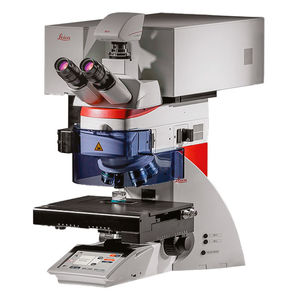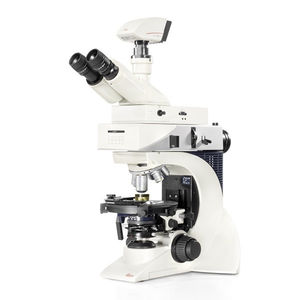
- Metrology - Laboratory
- Laboratory Equipment
- Forensic microscope
- Leica Microsystems GmbH
- Company
- Products
- Catalogs
- News & Trends
- Exhibitions
Laboratory microscope DM seriesfor materials researchfor forensicsupright






Add to favorites
Compare this product
Characteristics
- Technical applications
- laboratory, for materials research, for forensics
- Ergonomics
- upright
- Microscope head
- binocular, trinocular
- Observation technique
- bright field, fluorescence, polarized
- Configuration
- benchtop
- Light source
- LED illumination, with coaxial illumination
- Other characteristics
- digital camera, high-resolution, modular, USB, with light intensity manager, movable objective, for flat samples, for polished samples, asbestos identification
Description
If you would like to investigate crystalline structures, polarization microscopy will serve you best. Whether it be minerals, plastics and polymers, drugs and pharmaceuticals, or pigments and cement, with our polarization microscopes you will see what interests you most as a researcher or in quality assurance.
Depending on your application, you can choose from three different systems for polarization microscopy:
• - The fully coded and semi-automated Leica DM4 P
• - The manual Leica DM2700 P
• - The Leica DM750 P educational microscope
Get Optimal Results
You need a few components to get what you aim for in polarization. These are the most important:
• - Strain-free optics, because you need to be sure that the observed birefringence results from the sample and not from the optics
• - LED illumination is crucial, because it lights the samples homogenously and at a constant color temperature
• - Polarizers will make birefringence visible and a rotatable stage enables you to align the sample and optical axis
• - You need a Bertrand lens for conoscopic observation of the optical axis and compensators for measurement tasks
There will be Light!
LED illumination saves you money in many ways: It consumes less energy than halogen illumination, and does not need to be replaced, causing downtime of your instrument, because it has a lifetime of up to 25,000 hours. Further advantages:
• - LED lights your samples homogeneously and at a constant color temperature, providing you with a realistic impression of your sample
• - LED adjusts light intensity fast so you can work smoothly
Catalogs
Other Leica Microsystems GmbH products
Upright microscopes for industrial and materials
Related Searches
- Leica microscope
- Leica optical microscope
- Leica laboratory microscope
- Leica inspection microscope
- Leica benchtop microscope
- Leica LED illumination microscope
- Leica digital camera microscope
- Measuring microscope
- Leica polarized microscope
- Analysis microscope
- Leica stereo microscope
- Leica USB microscope
- Leica trinocular microscope
- Leica upright microscope
- Leica bright field microscope
- Optical stereo microscope
- Portable microscope
- Leica educational microscope
- Opto-digital microscope
- Leica high-resolution microscope
*Prices are pre-tax. They exclude delivery charges and customs duties and do not include additional charges for installation or activation options. Prices are indicative only and may vary by country, with changes to the cost of raw materials and exchange rates.











